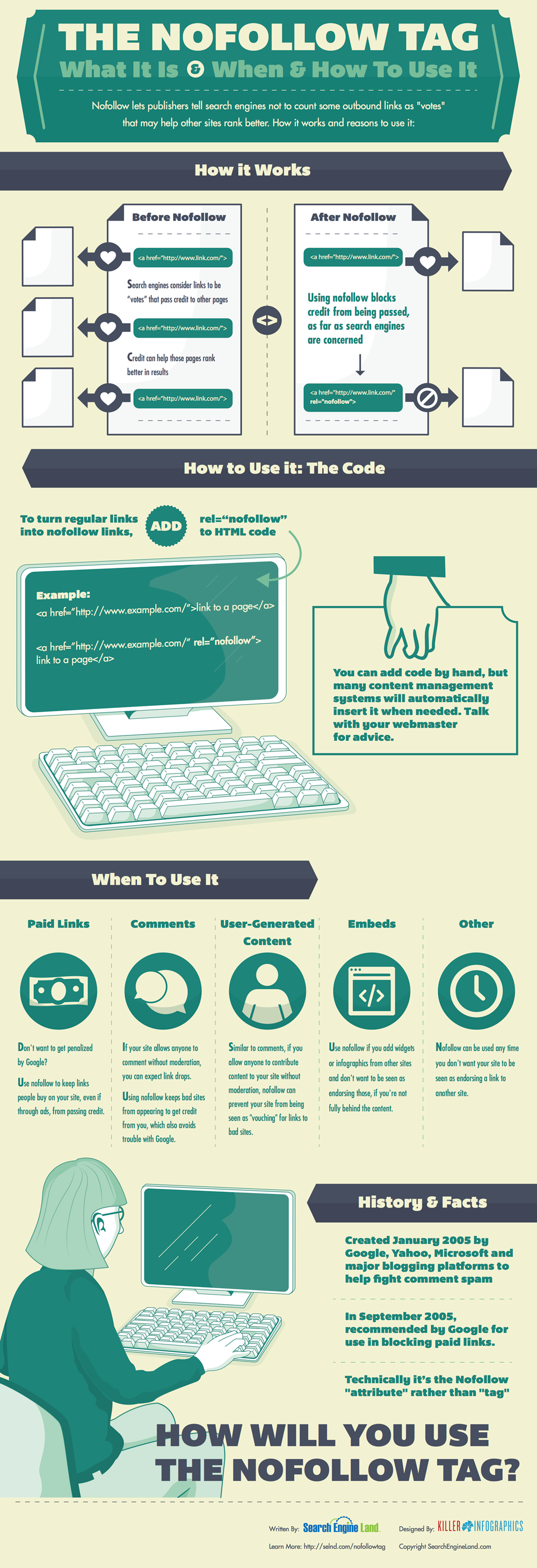Hyperlink relationships
Page Contents
When a link is placed onto a webpage the relationship between source and destination URL is expressed by the ‘rel’ attribute within the anchor link. In the following example the relationship attribute indicates that the linked to resource is the webpage of the author of the current document.
- <a rel=”author” href=”http://www.johnsmith.com/”>John Smith</a>
For more examples of the possible values of the relationship attribute please see w3schools.
rel=”nofollow”
In terms of link analysis, the value of the relationship attribute which is most pertinent is nofollow. The nofollow attribute was announced by Google in early 2005. The Yahoo and Bing search engines also respect and take note of this attribute.
The nofollow attribute was designed to achieve the following,
By adding rel=”nofollow” to a hyperlink, a page indicates that the destination of that hyperlink should not be afforded any additional weight or ranking by user agents which perform link analysis upon web pages (e.g. search engines). microformats.org
An atypical example of nofollow is within Comment links. Users are able to add a link to a comment left on a weblog. To the owner of the weblog this individual is an unknown third party, they may not wish to endorse (by default) the website that this user has chosen to link to. The automatic inclusion of the nofollow relationship attribute ensures that, whilst users can follow the link, search engines do not pass any value with the link which could effect search engine ranking positions. The mass link spamming of commenting systems was one of the principle issues which lead to the release of nofollow by Google.
Practical use of nofollow
Put simply, nofollow should be added to links that you want Google (and other search engines) to ignore in terms of passing link authority/equity from one webpage to another.
Your website may have a number of paid links pointing to it that Google views as manipulative. These links may be though be referring a decent amount of traffic to your website. Rather than just simply removing the link, the nofollow value can be added to the relationship attribute of these links, ensuring that the traffic remains but the negative (manipulative) impact of these links is removed.
The addition of nofollow to a link is a clear signal to Google not to view the link as an endorsement (or ‘vote’) from one webpage to another.
